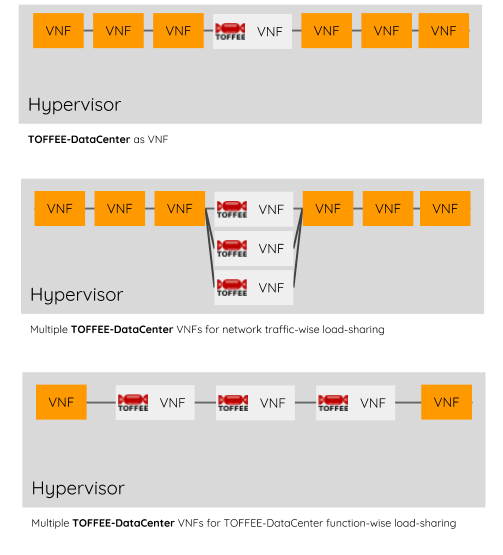DOCUMENTATION 》 TOFFEE-DataCenter as a VNF for NFV
TOFFEE-DataCenter as a VNF for NFV: You can deploy it as a VNF within your overall NFV/SDN infrastructure as shown below. Besides TOFFEE-DataCenter can also be customized to perform load-sharing for high-bandwidth high-speed WAN network traffic-wise with multiple TOFFEE-DataCenter NFVs. The advantage of this approach is that it needs least amount of customization of existing TOFFEE-DataCenter modules. Or you can do TOFFEE-DataCenter internal module-wise load-sharing with multiple TOFFEE-DataCenter NFVs. But this approach needs deep internal architectural level (and source-code) customization.

Learn more about: TOFFEE WAN Optimization deployment
Tópicos sugeridos:
TOFFEE - Otimização de WAN
Categories
| 💎 TOFFEE-MOCHA new bootable ISO: | Download |
| 💎 TOFFEE Data-Center Big picture and Overview: | Download PDF |

Saturday' 13-Mar-2021
Featured Educational Video:

Saturday' 13-Mar-2021

Saturday' 13-Mar-2021
Research :: Optimization of network data (WAN Optimization) at various levels:

Learn Linux Systems Software and Kernel Programming:

Hardware Compression and Decompression Accelerator Cards:

TOFFEE-DataCenter on a Dell Server - Intel Xeon E5645 CPU:






